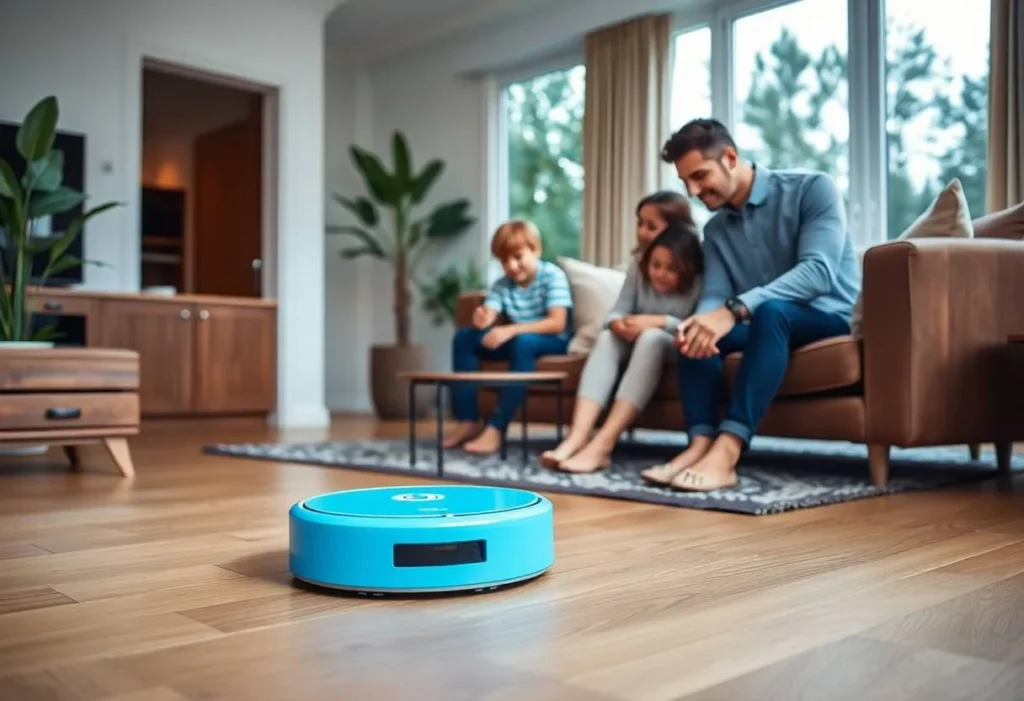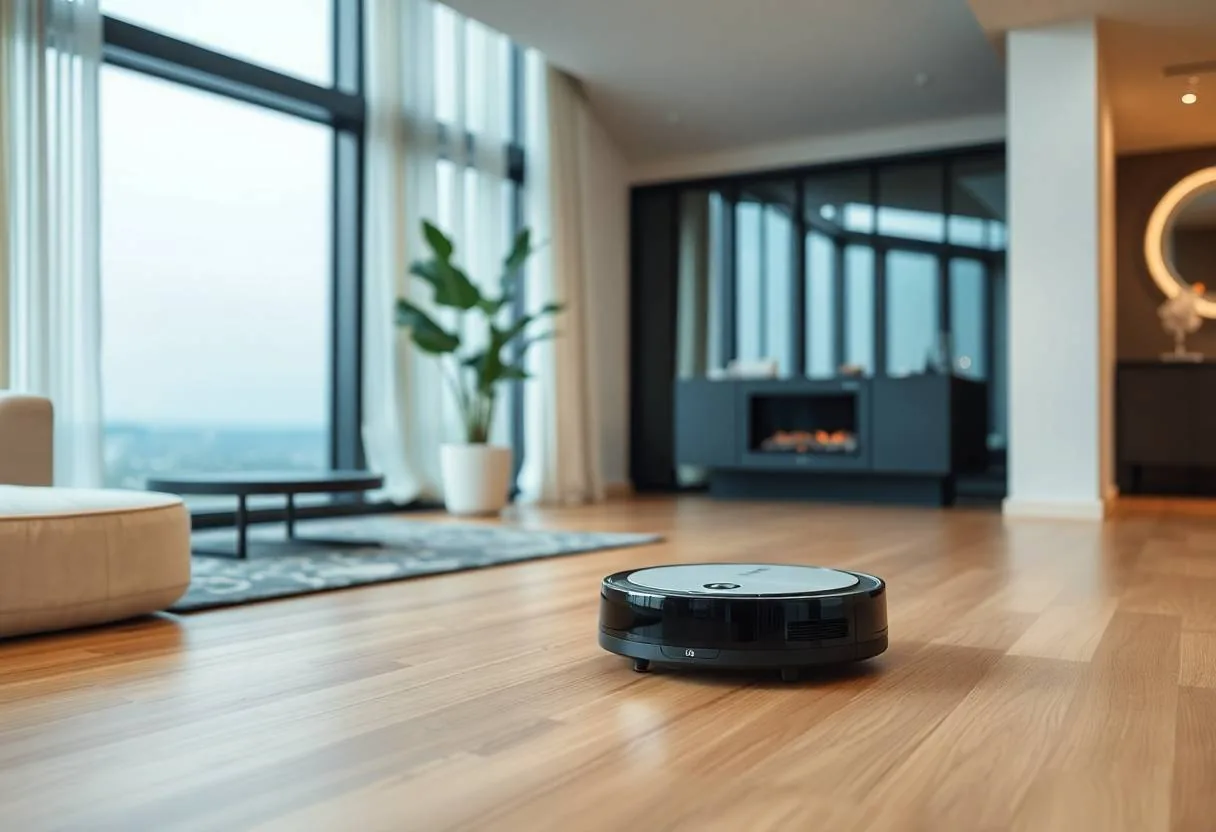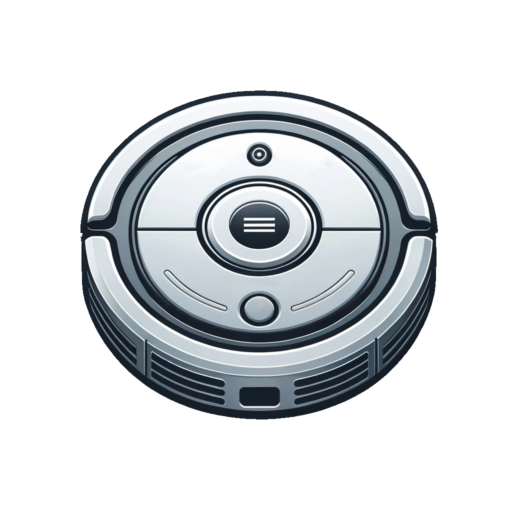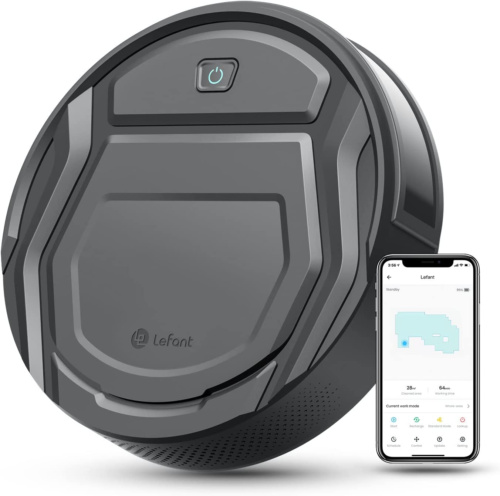
Read our updated reviews and opinions to find the best Vacuums
Save time by automating your home with a cleaning robot!
Last posts
Redkey MG1000 – Full Review 2025
If mowing season makes you sigh every weekend, the MG1000 finally lets you swap sweat for smart automation. Built for suburban homeowners with up to a quarter-acre of grass, it slips under shrubs, hums quieter than most dishwashers, and returns to the dock before you even remember it’s out there. The real hook? It promises…
Redkey MG500 – Full Review 2025
Dragging a heavy mower over a sloped, 0.20-acre lawn on a sticky summer afternoon is nobody’s idea of fun. The Redkey MG500 robotic mower targets homeowners who want a consistently manicured yard without the sweat, ear-shattering noise, or sore back. By combining inch-level C-ToF navigation with a cross-cut pattern that is three times faster than…
ANTHBOT Genie1000 – Full Review 2025
Dragging a noisy gas mower across half an acre every weekend is nobody’s idea of fun—especially if your yard snakes around trees, patios, and the kids’ soccer goal. The ANTHBOT Genie1000 fixes that headache by combining full-band RTK GPS with a four-camera vision system, so it knows exactly where to cut without you burying a…
Einhell Freelexo 500 BT – Full Review 2025
If your Saturday mornings keep disappearing behind a push-mower handle, Einhell’s Freelexo 500 BT promises to hand those hours back. Built for midsize suburban lawns up to roughly 5,400 ft², the red-and-black bot trims while you sip coffee inside and, unlike earlier ‘dumb’ robots, lets you tweak its schedule and zones from a phone. Add…
Einhell 3414011 – Full Review 2025
Wrestling with a spool of boundary wire, hunting down compatible blades, and praying your battery survives the weekend can drain the joy from owning a robotic lawn mower. The Einhell Installation Kit for up to 8,611 sq ft lawns rolls all those pain points into one neat box: wire, pegs, blades, fast charger, and a…
WORX WR184E – Full Review 2025
Dragging a noisy, gas-guzzling mower around a ¼-acre yard is the kind of weekend chore that turns home ownership into a grind. The WORX Landroid S WR184E flips that script for suburban homeowners who want a consistently neat lawn but also want their Saturdays back. Designed for yards up to 4,300 ft², it quietly trims…
Best sellers Review
Advantages of Robotic Vacuum Cleaners
⏰ Save Time: Robotic vacuums operate autonomously, meaning you can turn them on and forget about them. This allows you to use that time for other important tasks or enjoy your free time.
💃 Less Physical Effort: Ideal for older adults, those with mobility issues, or simply for those who want to avoid the physical task of vacuuming.
📅 Scheduled Cleaning: Many models allow you to set cleaning schedules, meaning you can program the vacuuming for when you’re not at home or while you’re sleeping.
🎯 Efficiency and Precision: These “cleaning rumbas” are equipped with advanced sensors that enable them to detect dirt, dust, debris, and pet hair. They can reach difficult areas such as under furniture, and their design allows them to maneuver in tight spaces.
📱 Mobile Control: “Smart” models offer the ability to be controlled via a mobile app. This allows you to start the cleaning from anywhere.
A home where the tasks of vacuuming, sweeping, and mopping are done automatically, giving you more time to enjoy what you really like. Keep your home clean and healthy without effort. 🏡
Featured brands
Frequently Asked Questions about Robotic Vacuums
What to Consider When Buying a Robotic Vacuum?
When buying a robotic vacuum, you should consider factors such as battery capacity, suction power, dustbin capacity, whether it can mop or not, if it can overcome obstacles like carpets and steps, and if it has an intelligent navigation system.
Which Robot Mops Best?
The mopping performance of robots can vary by model. Some of the robots highly rated for their mopping capability include the Roborock S7, the Cecotec Conga 5090, and the iRobot Braava Jet m6.
What Power Should a Robotic Vacuum Have?
The necessary power of a robotic vacuum largely depends on the type of cleaning you require. However, a suction power between 1500 and 2000 Pa (Pascals) is usually sufficient for most home cleaning tasks.
What is the Automatic Vacuum Called?
The automatic vacuum is commonly known as a robotic vacuum. There are various models and popular brands on the market, such as iRobot Roomba, Roborock, Cecotec Conga, among others.
How Much Electricity Does a Robotic Vacuum Use?
The energy consumption of a robotic vacuum is quite low compared to other appliances. Normally, it can vary between 20 and 70 watts per hour of use, depending on the model and the functions being used, which roughly equates to about 1 cent per hour of use.
How Long Does a Robotic Vacuum Last?
The lifespan of a robotic vacuum depends on various factors, such as build quality, usage, and maintenance. However, generally, you can expect a high-quality robotic vacuum to last between 4 and 6 years with regular use.
What Can a Cleaning Robot Do?
A cleaning robot can perform several tasks, such as vacuuming dust and dirt from the floor, mopping and drying. Some advanced models can also empty their own dustbin. Many of them feature programming and intelligent navigation, allowing them to clean autonomously and efficiently.
How to Know if a Vacuum is Powerful?
The power of a vacuum is usually measured in watts (W), which represent the electrical energy it consumes. However, a more useful measure to understand a vacuum’s suction power is Pascal (Pa), which measures suction capability. The higher the number, the more powerful the vacuum.
Which Vacuum Has the Highest Suction Power?
The model with the highest suction power is the Roborock S7 MAX Ultra with an ultrasonic suction power of 5500 Pa.
Which is the Best Robot?
The “best” robotic vacuum may vary depending on each person’s individual needs. However, some models that often receive high ratings are the Roborock S7, the iRobot Roomba i7+, and the Neato Botvac D7.
How Do You Use a Robotic Vacuum?
Most robotic vacuums are quite easy to use. You just have to press the start button, and the robot will begin cleaning. Some more advanced models can be controlled through an app on your mobile phone, allowing you to schedule cleaning times and even draw cleaning maps.
What is a Smart Vacuum?
A smart vacuum, also known as a robotic vacuum, is an autonomous cleaning device. These robots are equipped with sensors, algorithms, and sometimes cameras to navigate your home. They can be programmed to clean at certain times of the day, and some models can even be controlled through an app on your mobile phone.
How Useful is a Robotic Vacuum?
A robotic vacuum can be very useful for keeping your floors clean without having to do the work yourself. They are especially useful in homes with pets, where hair accumulates quickly. However, they may not be sufficient for deep cleaning or for dealing with tough stains, so you might still need a traditional vacuum for those tasks.
How Good is a Robotic Vacuum?
The effectiveness of a robotic vacuum depends on the model you choose. High-end robotic vacuums usually have excellent suction power, efficient navigation, and advanced features, such as the ability to map your home. They can also be programmed to clean when you are not home. However, it is important to note that while they are very useful for daily maintenance, they may not completely replace a thorough cleaning with a traditional vacuum.
How Long Does It Take for a Robotic Vacuum to Charge?
The charging time for a robotic vacuum can vary from one model to another, but generally, you can expect your robotic vacuum to take between 2 and 4 hours to fully charge. The battery life will also vary, but most models can operate for at least 60 to 120 minutes on a single charge.
Where to Place the Base of the Robotic Vacuum?
It’s best to place the charging base of the robotic vacuum in an open and easily accessible area. Avoid places with heavy traffic or where there are obstacles that the robot might have difficulty overcoming. It’s also advisable for the base to be near an electrical outlet and to have at least one meter of free space on each side to allow the robot to easily dock.
Explore Other Useful Review Sites

If you’re looking for detailed reviews and comparisons of the latest tech gadgets — from smartphones and tablets to smartwatches and speakers — visit specverdict.com. You’ll find comprehensive breakdowns, spec analyses, and real user insights to help you choose the best device for your needs.

For expert reviews and side-by-side comparisons of PCs, laptops, monitors, and more, check out pcgearreviews.com. From performance tests to buyer guides, you’ll find everything you need to make the right choice











